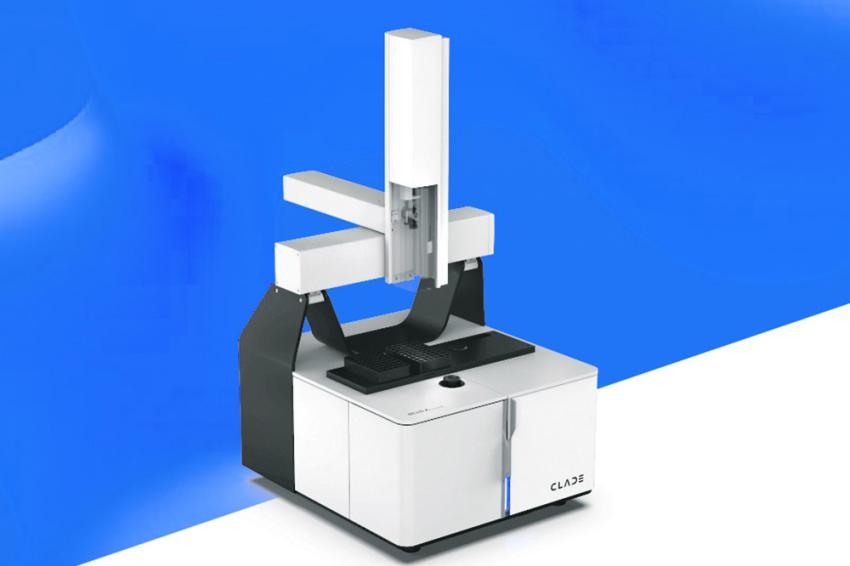Cultured Meat and Fermented Proteins
Alternative Foods to Meet the Increasing Nutritional Needs of a Growing World Population
Progress in the field of cultivated food production, characterized by the fermentation of food ingredients, proteins and meat alternatives, is undoubtedly one of the most exciting developments of our time. It is becoming increasingly clear that this industry has the potential to profoundly change the way we produce and consume food. Nevertheless, the challenges are numerous and considerable. While many companies are presenting feasibility studies and initial product versions, the cost of mass production remains a key obstacle due to limited analytical methods and thus severely restricted opportunities for process optimization.
The global food consumption market is poised for significant growth in the coming years, driven by factors such as urbanization, rising incomes, and evolving lifestyles. According to IMARC's report titled "Meat Market: Global Industry Trends, Share, Size, Growth, Opportunity, and Forecast 2023-2028," the global food market is projected to reach a value of US$ 1.6 trillion by 2028, underscoring the increasing importance of this sector with a compound annual growth rate of 2.3%.
While population growth plays a role in driving higher food consumption, the rate of growth in the food market tends to outpace that of the human population. This suggests a growing demand for diverse food options, including convenience foods, ready-to-eat meals, specialized dietary products, and alternative foods that are not reliant on arable land.
For example, Singapore, a country with limited land resources for traditional agriculture, has set an ambitious target known as "30-by-30." The government aims to locally produce 30% of its nutritional needs by 2030 through sustainable urban farming, vertical farming, and the use of advanced technologies to boost food production. However, achieving this goal requires technological solutions that minimize the need for vast amounts of arable land.
Sustainable Protein Sources
Alternative proteins offer a sustainable and ethical response to meeting future food demands, some of which do not depend on valuable land resources. Plant-based proteins derived from soy, peas, and lentils have gained popularity due to their positive environmental impact and health benefits. Nevertheless, the challenge of land utilization persists.
Cultured meat, produced through cellular agriculture, holds the potential to reduce the environmental footprint of traditional livestock farming while still providing the familiar taste of meat. This method avoids the consumption of land. Furthermore, fermentation-based proteins produced using microorganisms like bacteria or mycelium show promise in terms of scalability and nutritional value.
Currently, traditional animal-based meat is more cost-effective compared to alternative options. However, without a significant catalyst to drive technological advancements, such as enhancing production processes for greater efficiency, alternative proteins must attain price parity with conventional meat to effectively close the price gap and become competitive.
Despite the potential benefits of cultured meat and fermentation-based proteins, challenges persist. In cultured meat production, identifying optimal growth-supporting factors for desired cells or products remains a hurdle. Ongoing research aims to refine the growth medium and establish efficient production processes to enhance cell growth.
Similarly, in fermentation-based proteins, understanding and controlling the fermentation process to achieve desired protein profiles pose challenges that necessitate innovative solutions. In both cases, increasing the overall yield to reach cost parity is highly desirable. Unfortunately, current analytical methods in the foodtech ecosystem do not provide a rapid comprehensive overview with a fingerprint of all contained compounds.
"The economic viability of producing cultivated food is one of the biggest hurdles for the industry."
Analytics as a Driver of Innovation
Traditional analytical methods used in the industry have proven to be limiting. They often take hours to days, and even then, you need to know in advance exactly what ingredients you are looking for. This poses problems, especially in an industry characterized by complex biologically triggered sample compositions. Add to this the high variance in sample preparation and the significant impact that different users can have on results. In short, classical analysis often hampers innovation and efficiency.
This is where MIRA Aquaspec technology offers an exciting and potentially revolutionary solution. Based on mid-infrared spectroscopy, it creates a comprehensive digital twin of any liquid analyzed in just 4 minutes. This type of speed and accuracy, combined with extreme reproducibility, is unprecedented in the industry.
The benefits of this technology are profound. First, the ability to profile a liquid in such detail enables in-depth and comprehensive analysis. By capturing a wide range of ingredients, complex relationships and correlations between them can be identified. This is critical to understanding and identifying limiting factors in the production process, which in turn paves the way for optimization.
The economics of "cultured food" production is one of the biggest hurdles facing the industry. This is where MIRA technology proves particularly valuable. Traditional production methods often require expensive and specific raw materials. MIRA, on the other hand, enables the use of more diverse and cost-effective materials, including natural materials and food scraps. This not only reduces costs but also promotes a more sustainable production method.
The downstream and fill & finish sectors benefit from MIRA technology by enabling control and optimization of the downstream processes through the monitoring of Critical Quality Attributes (CQAs). Especially in the downstream phase, it is crucial to streamline the cleaning processes as efficiently as possible to remove only the substances that are essential for product quality, such as eliminating unwanted flavors (off-flavors).
One often overlooked area is sustainability. While green biotechnology is generally considered a solution for sustainable production, there are still challenges. For example, the water consumption in many processes remains very high, particularly in water-scarce countries where these processes cannot be optimally implemented. Clade's MIRA technology could contribute to reducing water consumption by optimizing processes and offering the possibility of water reuse after analytical testing.
Data-based Process Optimization
The use of advanced algorithms, especially those developed by Clade, enhances the utility of MIRA technology. CLADE's calibration-free DOSIM method, based on database entries of digital twins (eTWIN), enables rapid qualitative and quantitative detection of known compounds. In addition, cluster algorithms help distinguish optimal from suboptimal production batches based on spectral patterns. And once sufficient data from different batches is available, deep learning methods can be implemented to describe the production process down to the smallest detail.
These algorithms, in combination with MIRA technology, enable not only process optimization but also real-time monitoring and regulation of processes. And not only in theory: In the pharmaceutical industry, MIRA technology has already contributed to significant optimizations. A similar approach in the "cultivated food" sector is thus possible by analogy.
Conclusion
The MIRA Aquaspec technology, complemented by Clade's innovative algorithms, has the potential to revolutionize the "Cultivated Food" sector. The combination of speed, accuracy, reproducibility, and flexibility will reduce production costs and increase quality. For consumers, this means better products at competitive prices, while producers benefit from more efficient processes. It's an exciting time for the cultured food industry, and with technologies like MIRA at the forefront, the best days are certainly ahead.
Stefan Bahnmüller, Executive Director, Evovian Pte. Ltd., Singapur
Andreas Wolf, Gründer, Clade AG, Frankfurt am Main







